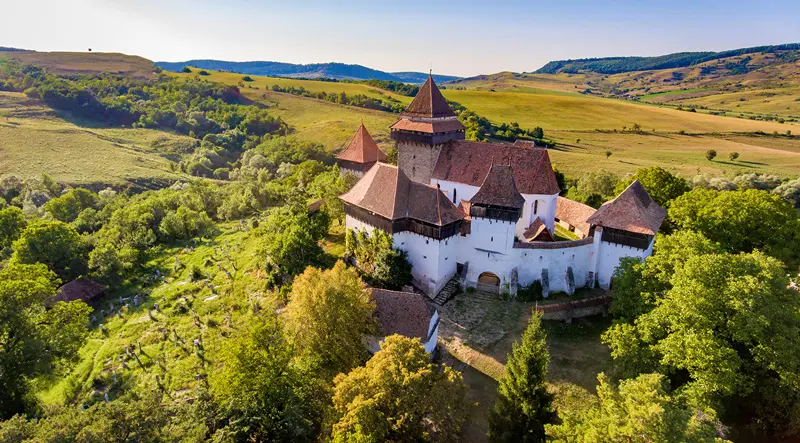Chapters
The six surviving Dacian fortresses (Costesti-Cetatuie, Costesti-Blidaru, Luncani-Piatra Rosie, Sarmizegetusa Regia, Banita, and Capalna) used to be part of a system of fortifications built by the Dacians in the first century BC around their capital, Sarmizegetusa. Their location, at the top of virtually inaccessible hills, surrounded by thick walls, hints at their exclusively defensive purpose. The walls were built according to a unique technology, using materials brought from far off. Since 1999 it’s a part of the UNESCO World Heritage.
Outside the fortresses, archaeologists have uncovered rectangular and around temples built to worship Zalmoxes, the Dacians’ supreme god. Once the capital of a great kingdom, the Dacian city of Sarmizegetusa fell victim to the cruelties of war during the confrontations with the Romans between 101-102 and 105-106. In order to stop the Dacians from retaliating against them, the Romans destroyed its walls, burned down its temples and relocated the capital. What remains today are stone ruins, offering just a glimpse of the monumental constructions put up by the Dacians of old.
Sarmizegetusa Regia – most famous Dacian fortresses
The most famous of all Dacian fortresses is Sarmizegetusa Regia, which has evidence of astronomical knowledge. Many comparative analyses between Sarmizegetusa and Stonehenge have been carried out. It emerged that the alignment of the two sanctuaries is similar. Here, four rectangular sanctuaries, two circular sanctuaries, and a solar disk have been identified. These are all the result of the archetypal teachings on time philosophy. From both a sacerdotal and lay point of view, they are spelt out in astronomical and calendar terms.
The sacred area at Sarmizegetusa hosted several religious sanctuaries. The great sanctuary served as a temple-calendar. It is structured around three concentric circles and a horseshoe-shaped internal apse. The first circle was made of 104 andesite blocks, the second of 180 andesite posts and the third of 82 thick timber posts. Researchers and historians diverge only with regard to the usage of the sanctuaries, whereas from a mathematical point of view, the absolute originality of the Dacian calendar and its surprising preciseness has been fully demonstrated.



